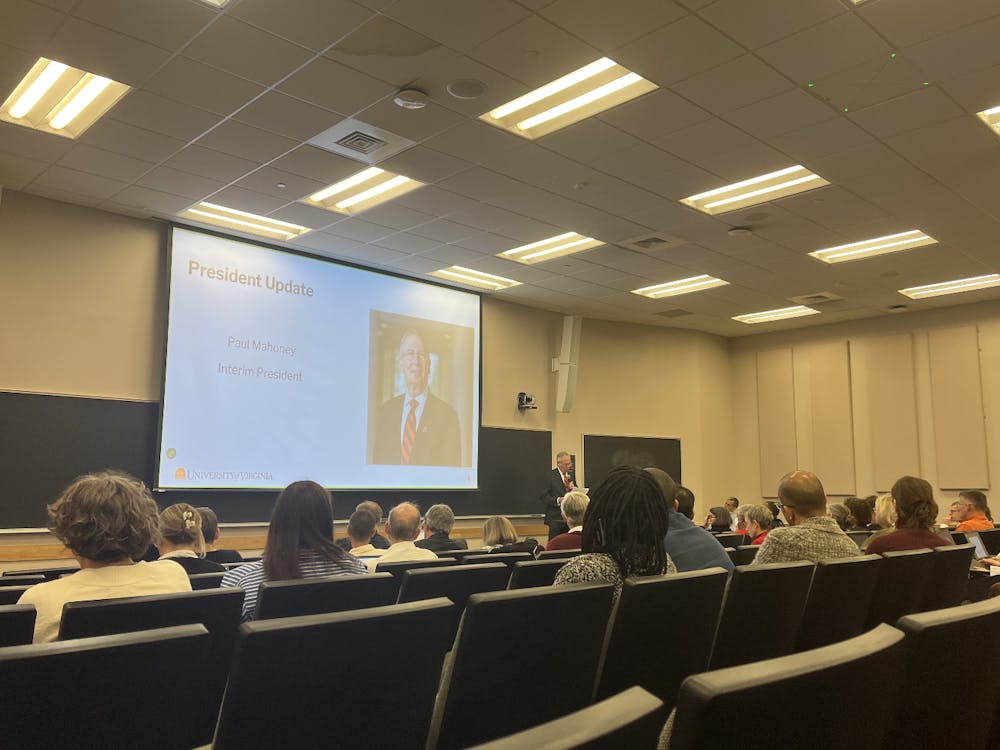As local roads and highways struggle to accommodate an increasing regional population, area leaders are looking to streetcars and roundabouts as potential solutions while long-term road projects continue to inch toward fruition.
At a Oct. 12 city-sponsored Transportation and Transit Summit, four nationally renowned transportation experts from Berkley, Philadelphia, Portland and Washington, D.C. met with approximately 40 citizens and 30 city, county and University officials to discuss future solutions to the region's transit problems.
The meeting focused on general recommendations and emphasized the importance of small-scale adjustments, said Jim Tolbert, director of neighborhood development services for the city, who helped organize the event.
"There wasn't one hard concrete thing they said to do," he said.
Suggestions included the construction of smaller local connector streets and the use of streetcars rather than trains for city mass transit.
"We need to build more streets and fewer roads," he said. "Light rail is not an option for us. They recommended increasing the trolley service."
Tolbert said information from the meeting would be presented to City Council for consideration in developing specific proposals in November.
Additionally, the Thomas Jefferson Planning District Commission, one of 21 such regional organizations in Virginia, will release on Nov. 20 the United Jefferson Area Mobility Plan, known as UnJAM 2025, because it is intended to define regional transportation priorities over next 20 years, which will include information about trends, paths and the future of area transportation.
Although a recent survey of Charlottesville public housing residents found that public transportation was a top priority, scoring higher than the need for food and clothing banks, some local residents have expressed concern that a new road will bring traffic, pollution and safety hazards to the area.
While proposed development along the Route 29 corridor in Albemarle County has necessitated the development of new transportation projects under the plan, there are many long-standing transportation concerns that have been in the works for several years, and in some cases decades.
City officials recently have begun looking at extending Hillsdale Drive, which runs parallel to Route 29 near the Seminole Square Shopping Center, in order to redirect local traffic off the main artery. A proposed western bypass would compliment the connector by serving to funnel through-traffic off Route 29.
Since 1967, the city also has been considering construction of the Meadowcreek Parkway, a pathway between Route 29 and the downtown mall.
An important function of the UnJAM report will be to consolidate these projects into a comprehensive plan, said Rhonda Edmunds, transportation project manager for the Thomas Jefferson Planning District Commission, which was established to address common solutions to regional problems, including transportation.
"A lot of these ideas have been floating out there," she said. "This is really bringing them together on one paper."
Indicating a shift in transit priorities, UnJAM will suggest increasing the availability of bike lanes, paths and sidewalks in addition to roads, said Harrison Rue, president of the Thomas Jefferson Planning District Commission.
"There is a dramatic increase in the amount of money to be spent on transit and pedestrian budgets," he said.
Funding for the projects will come from an estimated $240 million in federal, state and local funds, which are mostly raised through gasoline taxes, Rue said.
As the city looks to smaller roadways for traffic relief, the University has been taking the unusual step of building its own roads.
"The University doesn't normally build roads," University Landscape Architect Mary Hughes said.
A joint study by the city, county and University to be completed in the spring is exploring the possibility of extending Stadium Road to Fontaine Avenue, providing a direct route for commuters who use the 29 Bypass to access parking at Scott Stadium. Currently, these drivers must exit onto Fontaine and take a left onto Maury Avenue, adding congestion to an already crowded intersection.
Other proposed University roadways include the Maywood Connector, near the Medical Center, which would run parallel to Jefferson Park Avenue, providing an alternate route for hospital traffic. After a feasibility study is completed in January of next year, the University will have to find funding to support an estimated $20 million pricetag, which is significantly more than the approximate $4-5 million cost of extending Stadium Road.
Though not directly associated with the South Lawn Project, Hughes said construction of the Maywood Connector would compliment changes to that area of Grounds.
"Traffic studies show that within a few years JPA is going to be so crowded, it's going to be difficult to use," she said.
The projects are still in preliminary stages, and if they were to be built, the roads wouldn't be completed until at least 2006, if not longer, Hughes said.
"It will take a year to design and a year to build when we get the money," she said.
The North Grounds Connector, which would run from Massie Road to the 250 Bypass between the Darden School and University Village, is currently in its design phase and is expected to be complete in 2006 before the new arena opens for basketball games.






